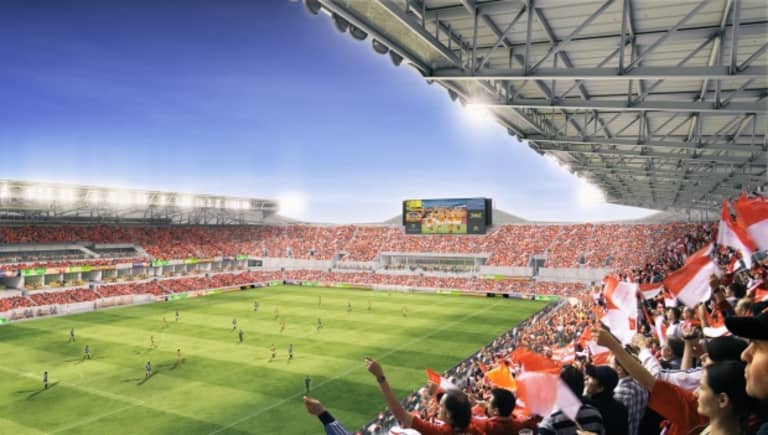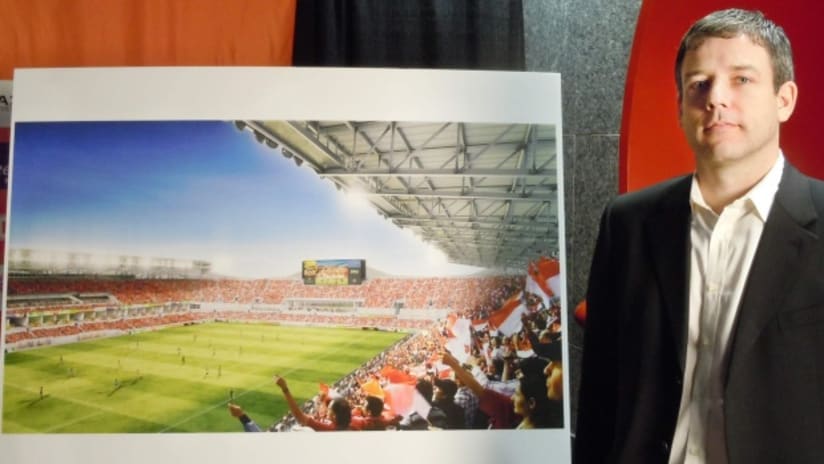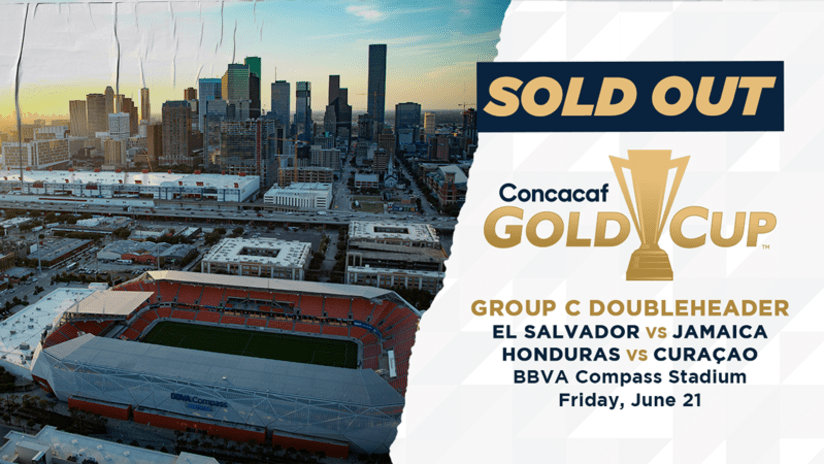Populous architect Loren Supp sat down with HoustonDynamo.com to discuss some of his favorite aspects of the forthcoming Dynamo stadium, the process of designing the stadium, and more.
HD: How does the design process work, from getting the call from the Dynamo and AEG to where we are now?
LS: It starts a little less defined. We hear, ‘We would like to do a new stadium and where could we do it? Here are some sites we’re looking at,’ or, ‘Here’s a site we’re looking at.’ In the case of the Dynamo, there was a long gestational period of, ‘How big is it? How many people do you want to go to these games? How intimate do you want it?’ I think once you settle on that, the rest sort of happens in a linear fashion.
Then it becomes, ‘Now we’ve got this plot of land and this many people we want to fit on it, so how progressive do you want to be? Do you want to be something that says I’m a soccer stadium or do you want to do something that says I’m the soccer stadium? I want to do something totally new.’
That was the most amazing thing about this project was that the Dynamo from the get-go have said, ‘Let’s do something that’s totally amazing and something new and something different, while at the same time respecting soccer heritage.’ That comes out especially in this wraparound bowl, so that there isn’t a bunch of breakage; that’s quintessential as part of the soccer experience. After establishing the idea, it was, ‘Now that we know we want to do this sort of icon for the neighborhood, what’s appropriate? After spending time in the neighborhood walking around, what makes sense there?’
MORE: DynamoStadium.com
HD: So how many trips does that take, to get an idea of the neighborhood and the site?
LS: It’s not how many trips, it’s how different are the times you spend there. If you always go at 5 o’clock in the afternoon, you’re always going to see the same side of a neighborhood. I would go running there in the morning when I would come to visit, and then I would come back mid-day, and then I would walk through in the evening. I did that a few times, enough to start getting a feel for it. Then you start reading about the area, because you don’t want to just stick something in there, willy-nilly.
What really hit us was the industrial nature that happened. I think that a lot of cities have that, but they don’t celebrate it. They fill it in and make it all brand-new. We said, 'Hey, let’s play that up.’ So we got this idea of a geometric object made of something simple in an industrial fashion. As that continued, the sort of gem idea came naturally.
HD: For the whole process, how collaborative is it at Populous?
LS: It’s definitely a group activity. Everybody brings a different knowledge base. So my thing, for instance, is I want to make sure it looks like a million bucks, like it’s something no one else has ever seen. There are other people who know how a soccer game is supposed to be played, for example. Populous in general has a wealth of experience that no one else has, especially in soccer. Being able to borrow from people is great, and on the design side, it wasn’t just me who said this should be industrial. I think it was a process of collaboration through that period. This is a big project. No one can say, 'I’m just going to design it and I’m done.' Once you establish what it is – the industrial gem – as long as everybody’s on board with that, everybody starts to plug in and play their parts.

HD: What’s a feature that you’re especially proud of that may not be obvious to the public at first glance?
LS: The feature which blew me away actually came to me when I visited another stadium, and I was thinking about our stadium. I was in the very worst seat they had, and I was thinking that in our stadium, in the very worst seat you could have, the worst one in the Dynamo stadium, it would be almost in the middle of [the other team's] seating bowl. The thing is so intimate. You’re only about 30 feet away from the field when you’re in some of the upper sections. That doesn’t exist anywhere else, and it’s amazing.
HD: What do you think is the first thing fans will notice when they walk to the completed stadium for the first time?
LS: When they walk up to it, they’re going to see one thing, and then when they walk in, I think they’re going to be blown away by how spacious the interior concourse is. For such a tight building, it’s going to feel quite spacious in there. Then they’re going to come into the bowl, and it’s going to be this intense, atmospheric zone, because it’s all wrapped in and because the sound is going to be contained. It’s going to be a surprise moment, where they go, ‘Aha!’ or ‘Wow!’ That’s going to be pretty amazing.





